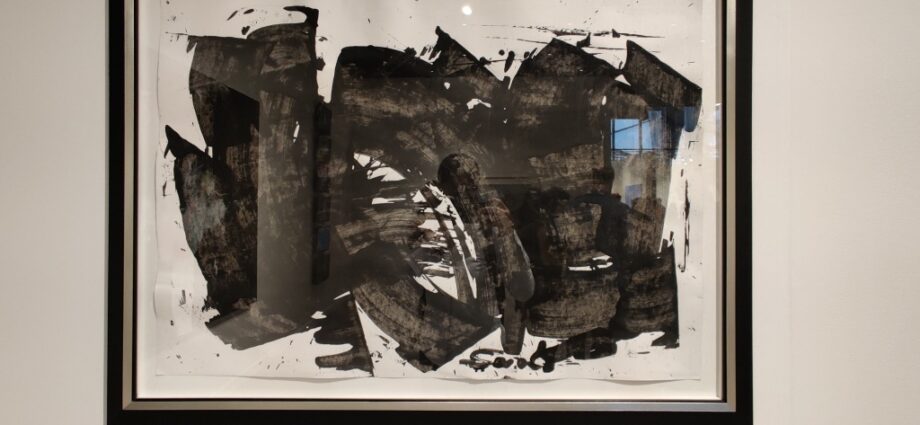Feminism and women’s rights have been taken up by artists for several decades now, but they have additional significance at the moment when taken up by artists from Iran. For months, women and girls have protested in the country for their rights after a 22-year-old woman, Jina (Mahsa) Amini, was killed in September by Iran’s so-called morality police.
For this year’s Frieze New York, Tehran-based Dastan Gallery brought work from an intergenerational group of five female artists, spanning a variety of styles, mediums, and time periods.
The gallery’s directors chose paintings by Behjat Sadr, Farideh Lashai, and Farah Ossouli, as well as a colorful knit yarn installation by Bita Fayyazi and a multi-channel video installation Newsha Tavakolian.
“There is lots of attention on Gen Z and young girls in the street but we wanted to get the focus back to 100 years ago to see how it’s not just something happening today,” Mamali Shafahi, a director at Dastan, told ARTnews.“It was generations and generations working on it and making these social changes happen”
The booth took inspiration from Germano Celant, who curated Lashai’s exhibition at the Tehran Museum of Contemporary Art in 2015. “He was under the impression that Farideh’s life was just as important as her work because of the social impact she has had,” gallery founder Hormoz Hematian said. “All of these artists have really played a major role in their society and their surroundings as well.”
Sadr, who was born in 1924 and died in 2009, was one of the very first art professors at the University of Tehran, where she taught for over 20 years. Dastan brought one of her last abstract paintings, Untitled (2009), featuring dynamic brushstrokes of black oil on paper.
Shafahi called Tavakolian, who was born in 1981, “a pioneering photographer” who started out in photojournalism before shifting to art-making. Her six-channel video installation, Listen (2010), which was exhibited at Paris’s Palais de Tokyo in 2019, shows video portraits of professional singers in front of colorful backgrounds without any audio, leaving the viewer to focus on the women’s expressive faces and intensity, their voices censored.
“They are not actresses, they are real singers, and she went to their studio to record,” Shafahi said.

Farah Ossouli, David and I (2), 2014.
A cofounder of the DENA group, which aims to promote the work of Iranian women artists, Ossouli has brought to the fair a 2014 gouache painting on cardboard. Titled David and I (2), the work takes the composition of Jacques-Louis David’s The Intervention of the Sabine Women (1799) and filters it through the lens of Persian miniature painting. “We did a show of her at the gallery four years ago: a whole series on how women are suppressed in society and how brave and courageous they are,” Shafahi said. Within the context of the recent protests, the work takes on renewed significance.



